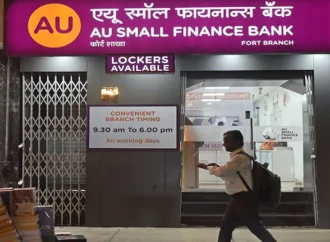SEBI’s new regulations for Small and Medium REITs (SMREITs) democratise real estate investments for retail investors, unlocking significant monetisation opportunities and enhancing liquidity. Platforms like Strata and Propshare are transitioning to SMREITs; offering stabilised returns and transparency.
New SEBI regulations for Small and Medium Real Estate Investment Trusts (REITs) have democratised investment in Indian real estate, making fractional ownership accessible to retail investors. These changes are fostering inclusivity and unlocking significant monetisation opportunities in the sector.
According to projections by ICRA, the new regulations are expected to unlock real estate monetisation opportunities valued between Rs. 67,000 and Rs. 71,000 crore. Approximately 530 lakh square feet of office space in the top seven cities now qualify for listing under SMREITs. Also, rent-earning residential properties, particularly co-living spaces, are increasingly attractive investments.
Several platforms, including Strata, Propshare, and Asset Monk, have transitioned their fractional ownership portfolios into SMREITs. This shift allows retail investors to participate directly in the real estate growth story. SEBI’s move to establish uniform guidelines drives significant momentum in the Indian REIT space, attracting more retail investors.
Transparency and Structure
SMREITs are structured as trusts managed by trustees, an investment manager (IM), and special purpose vehicles (SPVs) that hold the assets. This setup ensures transparency and governance, boosting investor confidence. Shares of the SPVs are owned by the trust and converted into saleable units. The IM plays a crucial role in managing the SMREIT and must hold a minimum of 5% (un-leveraged) or 15% (leveraged) of the total units issued. They must also maintain a minimum net worth of Rs. 20 crores.
Investment managers must adhere to strict guidelines, including mandatory holding requirements for units issued under the scheme and specific lock-in periods. However, these norms, especially the substantial stake and net worth requirements, can limit the scope for more SMREITs to emerge.
Democratizing Real Estate Investments
At least 200 individuals must invest in an SMREIT scheme, with no more than 25% of the scheme held by a single investor. Income-earning assets valued between Rs. 50 crores and Rs. 499 crores qualify for SMREITs, playing a crucial role in democratising real estate investment. The multi-pool asset structure of SMREITs, similar to mutual funds, allows for stabilised returns on investment and growth through multiple schemes.
Despite the benefits, the minimum unit size of Rs. 10 lakhs in SMREITs can deter investors compared to the lower unit sizes in traditional REITs. Lowering this unit size would make SMREITs more inclusive, enabling more retail investors to own a fraction of Grade A properties in prime locations such as Whitefield, Bengaluru, Bandra Kurla Complex, Mumbai, or Golf Course Road in Gurugram.
Enhanced Liquidity and Investment Opportunities
Investment managers can raise funds in SMREITs by issuing units and leveraging at the scheme or SPV level, with a leverage cap of 49% of the scheme assets. Each scheme must represent one or more assets valued at least Rs. 50 crores, held within a single or multiple SPVs. SMREITs can invest at least 95% of the funds mobilised by a scheme in fully developed, revenue-generating assets, with the remainder in liquid assets and deposits. This ensures stability and a steady income stream for investors, offering more liquidity than direct real estate investments.
Transition and Inclusion
Existing fractional ownership platforms benefit from reliefs that facilitate their transition into SMREITs, including exemptions from minimum unit holding requirements and asset size regulations. These reforms provide liquidity to investors who previously lacked it and make smaller real estate portfolios accessible.
Conclusion
The introduction of SMREITs has significantly innovated the REIT sector, broadening real estate investment opportunities for retail investors. Further reforms to lower the minimum unit value and simplify the net worth and lock-in requirements for investment managers could ensure the long-term success, growth, and accessibility of Indian SMREITs.























